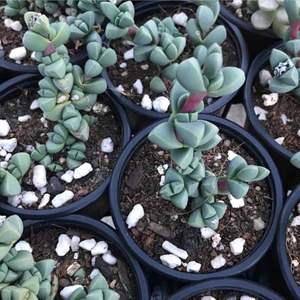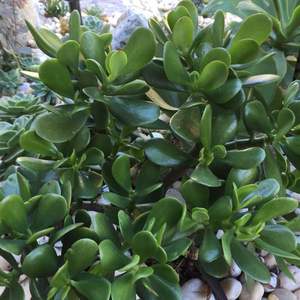成长记
Plantlin
2018年07月15日

I had a huge plant of these... but mist of it died:( this is what I rescued! Hope they will start growing back.








1
0
成长记
Lianne1969
2018年07月14日

I now added "Echeveria Lincoln aka marshmallow mama plant" in my "garden"


0
0
文章
Miss Chen
2018年07月14日

Peppers are a popular plant for the home vegetable garden. The three most common varieties of peppers are bell peppers, hot peppers and sweet peppers. Although peppers are relatively easy to grow, several factors can result in low fruit production. If you want to get your green pepper plants to produce more, be vigilant with their care.
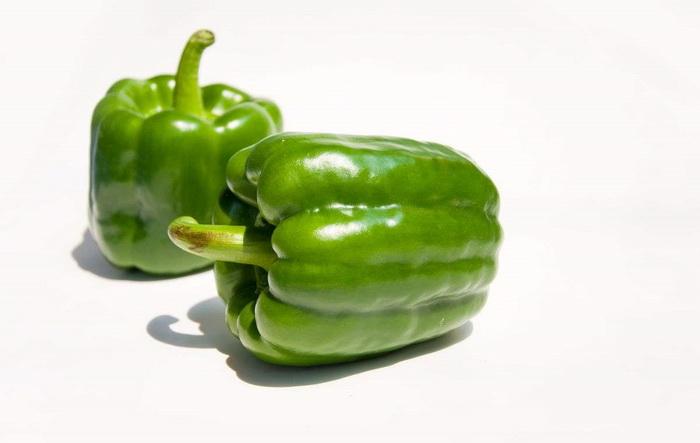
Step 1
Monitor temperatures. Peppers prefer warm whether, so avoid planting them until after the last frost of the season and cover them if frost is expected. Some varieties suffer during extended periods of extreme heat as well and require shading. Optimal temperatures for growing peppers range from roughly 70 to 85 degrees Fahrenheit.
Step 2
Provide proper nutrients. Fertilizer rich in nitrogen will result in a leafy, healthy plant but won't yield much fruit. Use a phosphorus and potassium-rich fertilizer as the plants begin to develop.
Step 3
Remove the first few flower buds. This allows the plant to develop more before it begins producing fruit and sometimes results in higher fruit production.
Step 4
Pick often. Picking fruits as they ripen encourages the plant to begin producing more fruit.

Step 5
Prune the plants. Moderate pruning in the late summer or early fall sometimes extends fruit production, but prune with care. Severe pruning damages the plant.

Step 1
Monitor temperatures. Peppers prefer warm whether, so avoid planting them until after the last frost of the season and cover them if frost is expected. Some varieties suffer during extended periods of extreme heat as well and require shading. Optimal temperatures for growing peppers range from roughly 70 to 85 degrees Fahrenheit.
Step 2
Provide proper nutrients. Fertilizer rich in nitrogen will result in a leafy, healthy plant but won't yield much fruit. Use a phosphorus and potassium-rich fertilizer as the plants begin to develop.
Step 3
Remove the first few flower buds. This allows the plant to develop more before it begins producing fruit and sometimes results in higher fruit production.
Step 4
Pick often. Picking fruits as they ripen encourages the plant to begin producing more fruit.

Step 5
Prune the plants. Moderate pruning in the late summer or early fall sometimes extends fruit production, but prune with care. Severe pruning damages the plant.
1
0
文章
Miss Chen
2018年07月14日

Eggplants (Solanum melongena) do not have a male or female gender, but they are endowed with cross-pollinating male and female flowers on each plant. We tend to think of the eggplant as a vegetable, but like the tomato, it is classified as a fruit. Fruit or veggie, eggplants do not have a gender.
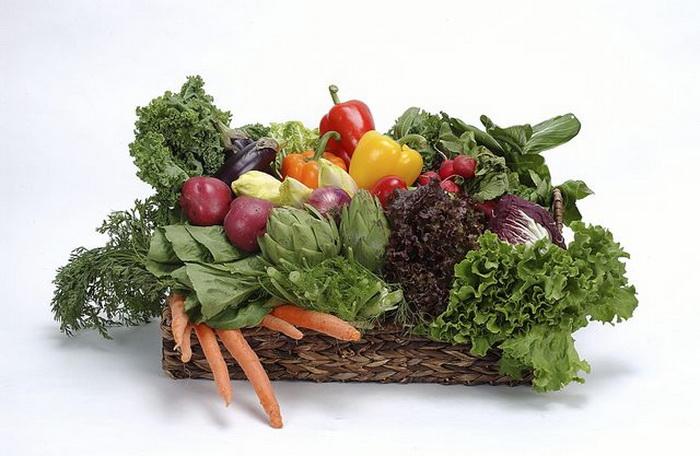
Dimple Differences
Two types of eggplant may develop on one plant, and that is likely the reason the myth of gender got started. One type has a roundish dimpled area at the blossom end, and the other type has a more oval-shaped dimpled area. The oval-dimpled eggplants are said to have more seeds and be less meaty than the roundish dimpled eggplants. Agriculture experts at the University of Illinois Extension describe the differences as a product of reproduction, not differences of gender.
Good Things About Eggplants
Eggplants love hot weather and grow well where more tender, leafy vegetables may wilt. They like growing conditions similar to tomatoes; they are from the same nightshade family of plants. Eggplants thrive in direct sunlight for six to eight hours per day.
There are several to grow , including egg-shaped 'Black Bell' and the long, slender variety called 'Ichiban.' The dimple differences can appear on fruit from every variety.
Easy To Grow
Once you have found the warm spot in the garden to grow your eggplants, start seeds or seedlings when nighttime temperatures are consistently at or above 65 degrees Fahrenheit. Their root systems are subject to cold damage and do not recover easily once they are affected. Allow 2 to 3 feet of growing space between plants. Give eggplant a steady supply of moisture but not enough to create soggy soil conditions. Test for dryness by inserting your finger in the soil; it should feel moist up to the first joint. A soaker hose or drip system is ideal for giving a slow, steady supply of moisture.
Harvest Time and the Dimples
Eggplants bloom with violet flowers in mid- to late summer, and small fruit begin to develop. The time from seed germination to harvest is 16 to 24 weeks, depending on the variety and growing conditions. Plants with a heavy load of fruit may fall over and need to be staked or propped up with a small tomato cage.

Eggplants are ready to pick when their skin is bright and glossy. If they are dull colored, the fruit has been left too long on the plant and may be bitter. Now is the time to turn the fruit upside down, see whether you have a round-dimpled eggplant or an oval-dimpled eggplant, and begin the enjoyment of and eating your eggplant.

Dimple Differences
Two types of eggplant may develop on one plant, and that is likely the reason the myth of gender got started. One type has a roundish dimpled area at the blossom end, and the other type has a more oval-shaped dimpled area. The oval-dimpled eggplants are said to have more seeds and be less meaty than the roundish dimpled eggplants. Agriculture experts at the University of Illinois Extension describe the differences as a product of reproduction, not differences of gender.
Good Things About Eggplants
Eggplants love hot weather and grow well where more tender, leafy vegetables may wilt. They like growing conditions similar to tomatoes; they are from the same nightshade family of plants. Eggplants thrive in direct sunlight for six to eight hours per day.
There are several to grow , including egg-shaped 'Black Bell' and the long, slender variety called 'Ichiban.' The dimple differences can appear on fruit from every variety.
Easy To Grow
Once you have found the warm spot in the garden to grow your eggplants, start seeds or seedlings when nighttime temperatures are consistently at or above 65 degrees Fahrenheit. Their root systems are subject to cold damage and do not recover easily once they are affected. Allow 2 to 3 feet of growing space between plants. Give eggplant a steady supply of moisture but not enough to create soggy soil conditions. Test for dryness by inserting your finger in the soil; it should feel moist up to the first joint. A soaker hose or drip system is ideal for giving a slow, steady supply of moisture.
Harvest Time and the Dimples
Eggplants bloom with violet flowers in mid- to late summer, and small fruit begin to develop. The time from seed germination to harvest is 16 to 24 weeks, depending on the variety and growing conditions. Plants with a heavy load of fruit may fall over and need to be staked or propped up with a small tomato cage.

Eggplants are ready to pick when their skin is bright and glossy. If they are dull colored, the fruit has been left too long on the plant and may be bitter. Now is the time to turn the fruit upside down, see whether you have a round-dimpled eggplant or an oval-dimpled eggplant, and begin the enjoyment of and eating your eggplant.
0
0
成长记
DaniH
2018年07月13日
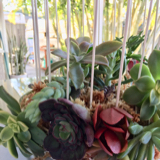
I now added "Kalanchoe tomentosa ‘Chocolate Soldier’ – Panda Plant" in my "garden"


0
0
文章
Miss Chen
2018年07月13日

When grown in the ground, asparagus (Asparagus officinalis) needs plenty of room for its large root system. When garden space is at a premium, however, you can grow asparagus in a container, as long as you're prepared for a smaller plant and a less bountiful harvest than you'd get with in-ground asparagus. Asparagus also spreads. So growing it in a container can help keep it from getting into parts of the garden where you don't want it to be. Asparagus grows as a perennial plant in U.S. Department of Agriculture plant hardiness zones 2 through 8, but some of its varieties are perennial in different USDA zones.

Choosing Varieties
Because container-grown asparagus plants do not produce as prolifically as asparagus grown in the ground, the best cultivars for container-growing are those that produce the highest yields per plant. 'Jersey Knight' is one such cultivar. It produces many large spears, which are the plant's edible, new shoots, and it is perennial in USDA zones 3 through 10.
Container-grown asparagus needs a fast start. So choose asparagus crowns -- 1-year-old, bare-root plants -- rather than trying to grow the plants from seeds.
Selecting a Container
Asparagus plants need a deep container that is wide enough not to crowd them. Each plant's container should be at least 18 inches deep and 1 foot wide, or give each plant that much width in a wider container. A ceramic, plastic or wooden container will work, and a large plastic storage bin is an option. The plants require good drainage, though. So if a container you choose does not have drainage holes in its base, then drill them yourself.
Planting Crowns
In spring, add organic potting soil to your container until the top of the soil is about 6 1/2 inches from the top of the container. Work about 1 ounce of granular 5-10-10 fertilizer per 3 square feet of soil surface area into the top few inches of the soil.

Set the asparagus crowns about 6 inches apart, and spread their roots on the top of the soil. Cover the crowns with 3 inches of soil, and water the soil thoroughly. Set the container in a spot that gets about eight hours of direct sunshine per day. When the crowns have grown to about 3 inches in height, cover them with 3 more inches of soil.
Fertilizing and Watering the Plants
Monitor the soil's moisture, and provide water whenever the soil dries out to a depth of about 2 inches. During hot, dry periods, the soil may need water daily.
Fertilize every spring with a handful of granular 5-10-10 fertilizer, scattering it around the crowns and lightly scratching it into the surface of the soil. Water thoroughly after applying the fertilizer.
Overwintering with Mulch
After the asparagus plants' foliage dies back in fall, cover the plants with mulch to protect them through winter. The plants' own die-back foliage can function as a convenient mulch.
Harvesting Spears
The plants probably will be ready for harvest in the third year after they were planted. In the third year, harvest the plants' spears one time after they reach 6 to 8 inches in height. In following years, you can harvest spears continuously for six to eight weeks. The spears emerge above ground from the root crowns.
Asparagus plants grown in the ground may continue to produce well for as long as 20 years, but container-grown plants will likely be productive for only three to five years.

Choosing Varieties
Because container-grown asparagus plants do not produce as prolifically as asparagus grown in the ground, the best cultivars for container-growing are those that produce the highest yields per plant. 'Jersey Knight' is one such cultivar. It produces many large spears, which are the plant's edible, new shoots, and it is perennial in USDA zones 3 through 10.
Container-grown asparagus needs a fast start. So choose asparagus crowns -- 1-year-old, bare-root plants -- rather than trying to grow the plants from seeds.
Selecting a Container
Asparagus plants need a deep container that is wide enough not to crowd them. Each plant's container should be at least 18 inches deep and 1 foot wide, or give each plant that much width in a wider container. A ceramic, plastic or wooden container will work, and a large plastic storage bin is an option. The plants require good drainage, though. So if a container you choose does not have drainage holes in its base, then drill them yourself.
Planting Crowns
In spring, add organic potting soil to your container until the top of the soil is about 6 1/2 inches from the top of the container. Work about 1 ounce of granular 5-10-10 fertilizer per 3 square feet of soil surface area into the top few inches of the soil.

Set the asparagus crowns about 6 inches apart, and spread their roots on the top of the soil. Cover the crowns with 3 inches of soil, and water the soil thoroughly. Set the container in a spot that gets about eight hours of direct sunshine per day. When the crowns have grown to about 3 inches in height, cover them with 3 more inches of soil.
Fertilizing and Watering the Plants
Monitor the soil's moisture, and provide water whenever the soil dries out to a depth of about 2 inches. During hot, dry periods, the soil may need water daily.
Fertilize every spring with a handful of granular 5-10-10 fertilizer, scattering it around the crowns and lightly scratching it into the surface of the soil. Water thoroughly after applying the fertilizer.
Overwintering with Mulch
After the asparagus plants' foliage dies back in fall, cover the plants with mulch to protect them through winter. The plants' own die-back foliage can function as a convenient mulch.
Harvesting Spears
The plants probably will be ready for harvest in the third year after they were planted. In the third year, harvest the plants' spears one time after they reach 6 to 8 inches in height. In following years, you can harvest spears continuously for six to eight weeks. The spears emerge above ground from the root crowns.
Asparagus plants grown in the ground may continue to produce well for as long as 20 years, but container-grown plants will likely be productive for only three to five years.
0
0
成长记
2B_BotanicalFie
2018年07月13日

Lets make it shorter! Now the cuttings are making roots at water so i can plant them back in this pot to make him fuller
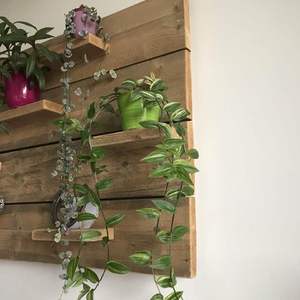
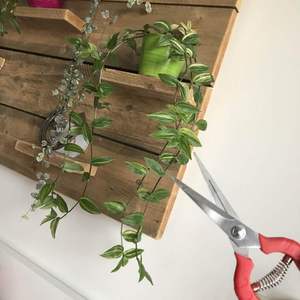
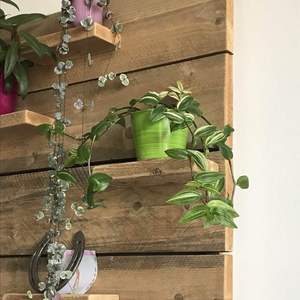



1
0
文章
Miss Chen
2018年07月12日

Zucchini, a summer squash, is an abundant producer in the home vegetable garden. Zucchinis ripen from midsummer until fall, continually blooming and producing until cold weather kills off the plant. Frequent harvesting encourages further fruit set on the plants, so pick the ripe ones daily during the height of the season. Zucchinis left too long on the plant become tough and woody, and are no longer fit for the kitchen. Harvesting the zucchinis at the proper time ensures they are also at their peak of flavor.

Step 1
Inspect the plant for zucchinis that have reached 6 to 8 inches in length, as this is the size when most varieties begin ripening. Harvest vegetables that have glossy skin and are firm, but that can still be dented with a fingernail.
Step 2
Grasp the ripe zucchini in one hand. Cut the stem ½ inch up from the zucchini with a sharp knife. Avoid pulling on the zucchini, as this can damage both the vegetable and the plant.

Step 3
Check the plant daily once zucchinis begin reaching maturity. Harvest the vegetables as soon as they reach maturity.

Step 1
Inspect the plant for zucchinis that have reached 6 to 8 inches in length, as this is the size when most varieties begin ripening. Harvest vegetables that have glossy skin and are firm, but that can still be dented with a fingernail.
Step 2
Grasp the ripe zucchini in one hand. Cut the stem ½ inch up from the zucchini with a sharp knife. Avoid pulling on the zucchini, as this can damage both the vegetable and the plant.

Step 3
Check the plant daily once zucchinis begin reaching maturity. Harvest the vegetables as soon as they reach maturity.
1
0
文章
Miss Chen
2018年07月11日

Description: This herbaceous perennial plant is 2-6' tall and unbranched, except sometimes toward the apex, where the flowers occur. The central stem is relative stout, pale green, terete, and usually short-pubescent (less often glabrous). The opposite leaves are up to 8" long and 3½" wide, broadly oblong in shape, and smooth along their margins. The upper leaf surface is pale-medium to dark green and hairless above, while the lower leaf surface is densely covered with woolly hairs that are very short. There is a prominent central vein along the length of each leaf, and finer side veins that radiate outward toward the smooth margins. When either the central stem or leaves are torn, a milky sap oozes out that has variable toxicity in the form of cardiac glycosides.
Umbels of flowers, each about 2½-4" across, emerge from the axils of the upper leaves. These flowers are quite fragrant, with a scent resembling violets or pansies, and they range in color from faded light pink to reddish purple. Each flower is about ¼" across, consisting of 5 reflexed petals and 5 raised hoods with curved horns. The hoods are more light-colored than the petals. The pedicels of the flowers are light green to pale red and hairy. The blooming period lasts about 1-1½ months from early to mid-summer. The seedpods (follicles) are 3-4" long, broadly lanceoloid, and covered with soft prickles and short woolly hairs. At maturity, each seedpod split along one side to release numerous seeds that have large tufts of white hair. Dispersion of seed is by wind. The root system has long creeping rhizomes, promoting the vegetative spread of this plant.

Cultivation: The preference is full sun, rich loamy soil, and mesic conditions, but this robust plant can tolerate a variety of situations, including partial sun and a high clay or sand content in the soil. Under ideal conditions, Common Milkweed can become 6' tall and spread aggressively, but it is more typically about 3-4' tall. This plant is very easy to grow once it becomes established.
Range & Habitat: The native Common Milkweed occurs in every county of Illinois and it is quite common (see Distribution Map). Habitats include moist to dry black soil prairies, sand prairies, sand dunes along lake shores, thickets, woodland borders, fields and pastures, abandoned fields, vacant lots, fence rows, and areas along railroads and roadsides. This plant is a colonizer of disturbed areas in both natural and developed habitats.

Faunal Associations: The flowers are very popular with many kinds of insects, especially long-tongued bees, wasps, flies, skippers, and butterflies, which seek nectar. Other insect visitors include short-tongued bees, various milkweed plant bugs, and moths, including Sphinx moths. Among these, the larger butterflies, predatory wasps, and long-tongued bees are more likely to remove the pollinia from the flowers. Some of the smaller insects can have their legs entrapped by the flowers and die. Common Milkweed doesn't produce fertile seeds without cross-pollination. The caterpillars of Danaus plexippes (Monarch Butterfly) feed on the foliage, as do the caterpillars of a few moths, including Enchaetes egle (Milkweed Tiger Moth), Cycnia inopinatus (Unexpected Cycnia), and Cycnia tenera (Delicate Cycnia). Less common insects feeding on this plant include Neacoryphus bicrucis (Seed Bug sp.) and Gymnetron tetrum (Weevil sp.); see Insect Table for other insect feeders). Many of these insects are brightly colored – a warning to potential predators of the toxicity that they acquired from feeding on milkweed. Mammalian herbivores don't eat this plant because of the bitterness of the leaves and their toxic properties.

Photographic Location: The photographs were taken at Meadowbrook Park in Urbana, Illinois, and along a roadside ditch in Champaign, Illinois.
Comments: Depending on the local ecotype, Common Milkweed is highly variable in appearance. The color of the flowers may be highly attractive, or faded and dingy-looking. This plant is often regarded as a weed to be destroyed, but its flowers and foliage provide food for many kinds of insects. Common Milkweed can be distinguished from other milkweeds by its prickly follicles (seedpods) – other Asclepias spp. within Illinois have follicles that are smooth, or nearly so.
Umbels of flowers, each about 2½-4" across, emerge from the axils of the upper leaves. These flowers are quite fragrant, with a scent resembling violets or pansies, and they range in color from faded light pink to reddish purple. Each flower is about ¼" across, consisting of 5 reflexed petals and 5 raised hoods with curved horns. The hoods are more light-colored than the petals. The pedicels of the flowers are light green to pale red and hairy. The blooming period lasts about 1-1½ months from early to mid-summer. The seedpods (follicles) are 3-4" long, broadly lanceoloid, and covered with soft prickles and short woolly hairs. At maturity, each seedpod split along one side to release numerous seeds that have large tufts of white hair. Dispersion of seed is by wind. The root system has long creeping rhizomes, promoting the vegetative spread of this plant.

Cultivation: The preference is full sun, rich loamy soil, and mesic conditions, but this robust plant can tolerate a variety of situations, including partial sun and a high clay or sand content in the soil. Under ideal conditions, Common Milkweed can become 6' tall and spread aggressively, but it is more typically about 3-4' tall. This plant is very easy to grow once it becomes established.
Range & Habitat: The native Common Milkweed occurs in every county of Illinois and it is quite common (see Distribution Map). Habitats include moist to dry black soil prairies, sand prairies, sand dunes along lake shores, thickets, woodland borders, fields and pastures, abandoned fields, vacant lots, fence rows, and areas along railroads and roadsides. This plant is a colonizer of disturbed areas in both natural and developed habitats.

Faunal Associations: The flowers are very popular with many kinds of insects, especially long-tongued bees, wasps, flies, skippers, and butterflies, which seek nectar. Other insect visitors include short-tongued bees, various milkweed plant bugs, and moths, including Sphinx moths. Among these, the larger butterflies, predatory wasps, and long-tongued bees are more likely to remove the pollinia from the flowers. Some of the smaller insects can have their legs entrapped by the flowers and die. Common Milkweed doesn't produce fertile seeds without cross-pollination. The caterpillars of Danaus plexippes (Monarch Butterfly) feed on the foliage, as do the caterpillars of a few moths, including Enchaetes egle (Milkweed Tiger Moth), Cycnia inopinatus (Unexpected Cycnia), and Cycnia tenera (Delicate Cycnia). Less common insects feeding on this plant include Neacoryphus bicrucis (Seed Bug sp.) and Gymnetron tetrum (Weevil sp.); see Insect Table for other insect feeders). Many of these insects are brightly colored – a warning to potential predators of the toxicity that they acquired from feeding on milkweed. Mammalian herbivores don't eat this plant because of the bitterness of the leaves and their toxic properties.

Photographic Location: The photographs were taken at Meadowbrook Park in Urbana, Illinois, and along a roadside ditch in Champaign, Illinois.
Comments: Depending on the local ecotype, Common Milkweed is highly variable in appearance. The color of the flowers may be highly attractive, or faded and dingy-looking. This plant is often regarded as a weed to be destroyed, but its flowers and foliage provide food for many kinds of insects. Common Milkweed can be distinguished from other milkweeds by its prickly follicles (seedpods) – other Asclepias spp. within Illinois have follicles that are smooth, or nearly so.
0
0
文章
Miss Chen
2018年07月11日

Description: This herbaceous perennial plant forms both basal leaves and erect to ascending stems with alternate leaves; the latter are 2-4' tall, branching occasionally. The stems are grayish green to nearly white, densely canescent, and terete, becoming more glabrous and slightly woody with age. Both the basal and lower alternate leaves are 2–4½" long and ¾–1¾" across (excluding their petioles); they are bipinnatifid to tripinnatifid. These leaves are deeply divided into primary lobes, while their ultimate lobes are more shallow and cleft. The ultimate lobes are 2-4 mm. across and narrowly oblong to narrowly oblanceolate in shape, tapering abruptly into bluntly acute tips. The middle alternate leaves are less divided and slightly smaller in size, while the upper alternate leaves are simple or sparingly lobed and even smaller in size. Both the upper and lower sides of the leaves are grayish green and sparsely to moderately canescent. The basal and lower alternate leaves have long petioles, while the middle alternate leaves have shorter petioles, and the upper alternate leaves are sessile or nearly so. Like the leaves, the petioles are grayish green and canescent. The foliage of this plant has a sage-like aroma with slightly bitter overtones. The upper stems terminate in panicles of flowers. Along the primary rachises of these panicles, there are primary leafy bracts at the bases of the secondary rachises; these primary bracts are up to 1" long, linear-oblong in shape, grayish green to nearly white, and canescent.
Secondary leafy bracts also occur at the bases of the peduncles on the secondary rachises; these secondary bracts are similar to the primary leafy bracts, except they are smaller in size. Both the primary and secondary rachises of the panicles are grayish green to nearly white and moderately to densely canescent; they are flat or slightly concave along their upper sides and rounded along their lower sides. The nodding flowerheads are 3-5 mm. across and 2-3 mm. tall; they are subgloboid in shape. Each flowerhead has 20-40 perfect disk florets that are surrounded by 10-20 pistillate disk florets; both types of florets are fertile. The florets are seperated by abundant silky hairs that originate from the receptacle. The tiny corollas of these florets are tubular in shape and 5-lobed along their upper rims. Overall, the appearance of these florets is yellowish brown. Along the sides of each flowerhead, there are small appressed phyllaries (floral bracts) in several overlapping series; these floral bracts are whitish green, densely canescent, and oblong to ovate in shape. The flowerheads have short curved peduncles that are whitish green and densely canescent. The blooming period occurs from mid-summer to early autumn, lasting 2-3 weeks for a colony of plants. The florets are cross-pollinated by the wind. Afterwards, the florets are replaced by small achenes. Mature achenes are 0.5–1 mm. long, narrowly oblongoid-oblanceoloid in shape, and light brown; they lack tufts of hair. The root system consists of a taproot up to ½" across. This plant reproduces by reseeding itself.

Cultivation: The preference is full or partial sun, moist to dry-mesic conditions, and soil containing loam, clay-loam, or some gravel. The soil should be well-drained. The size of individual plants can be highly variable depending on their age, moisture conditions, and soil fertility. For a herbaceous wormwood species (Artemisia), Absinthe tends to be long-lived.
Range & Habitat: Naturalized populations of Absinthe can be found in NE Illinois and scattered counties elsewhere, where it is relatively rare (see Distribution Map). All of these naturalized plants have escaped from cultivation. Absinthe was introduced into North America from Europe as an ornamental and medicinal plant. It is still cultivated occasionally in herb gardens today. In North America, this plant is more common in the northern plains of the United States and south-central Canada, where it is regarded as a weed of pastures. Habitats include pastures, sunny fence rows, gravelly areas along railroads, old homestead sites, and waste areas. Habitats with a history of disturbance are strongly preferred. In Illinois, Absinthe has difficulty to competing with taller native plants in natural areas.

Faunal Associations: Several species of aphids are known to feed on Absinthe (Artemisia absinthium); many of these species originated from Europe. Examples include such species as Coloradoa absinthii, Coloradoa angelicae, Coloradoa artemisiae, Macrosiphoniella absinthii (Absinthe Aphid), and other Macrosiphoniella spp. (Blackman & Eastop, 2013; Robinson & Bradley, 1965). Other insects that feed on wormwood species (Artemisia spp.) include Aphis middletonii(Erigeron Root Aphid), larvae of the leaf-miner fly Calycomyza artemisiae (Wormseed Webworm), larvae of the Gelechiid moth, Scrobipalpula artemisiella (Wormseed Webworm), and larvae of the Tortricid moths Eucosma agricolana and Phaneta dorsiatomana (Hottes & Frison, 1931; Spencer & Steyskal, 1986; Marcovitch, 1916; Miller, 1987). Some grasshoppers feed on these plants as well, including Hesperotettix viridis (Meadow Purple-striped Grasshopper), Hypochloa alba (Cudweed Grasshopper), and Melanoplus angustipennis (Narrow-winged Sand Grasshopper); see Vickery & Kevan (1985). Because the foliage of Absinthe is aromatic and bitter, it is not preferred as a source of food by herbivorous mammals. However, cattle and other domesticated livestock will feed on the foliage of Absinthe if little else is available. The consumption of a large quantity of foliage is potentially harmful as it contains the neurotoxin, thujone.

Photographic Location: An herb garden at Meadowbrook Park in Urbana, Illinois.
Comments: Absinthe (Artemisia absinthium) has been used to flavor an alcoholic liquor by the same name. Excessive consumption of this liquor has the potential to cause toxic effects and its use in some countries has been banned. Absinthe is similar in appearance to several other wormseed species (Artemisia spp.); both native and non-native species are present in Illinois. A native species that occurs in sandy areas, Beach Wormwood (Artemisia campestris), can be distinguished by the longer length and narrowness of the lobes of its leaves, the sterile florets in the center of its flowerheads, and the lack of villous hairs on the receptacle of its flowerheads. The presence of the last characteristic (villous hairs on the receptacles of the flowerheads) distinguishes Absinthe from all other wormseed species in Illinois, except for Prairie Sagebrush (Artemisia frigida). Prairie Sagebrush has smaller leaves with more narrow lobes (1 mm. across or less) than Absinthe, while its flowerheads are slightly larger in size (5-6 mm. across and 3-5 mm. tall). It is primarily a western species that is rarely found in Illinois.
Secondary leafy bracts also occur at the bases of the peduncles on the secondary rachises; these secondary bracts are similar to the primary leafy bracts, except they are smaller in size. Both the primary and secondary rachises of the panicles are grayish green to nearly white and moderately to densely canescent; they are flat or slightly concave along their upper sides and rounded along their lower sides. The nodding flowerheads are 3-5 mm. across and 2-3 mm. tall; they are subgloboid in shape. Each flowerhead has 20-40 perfect disk florets that are surrounded by 10-20 pistillate disk florets; both types of florets are fertile. The florets are seperated by abundant silky hairs that originate from the receptacle. The tiny corollas of these florets are tubular in shape and 5-lobed along their upper rims. Overall, the appearance of these florets is yellowish brown. Along the sides of each flowerhead, there are small appressed phyllaries (floral bracts) in several overlapping series; these floral bracts are whitish green, densely canescent, and oblong to ovate in shape. The flowerheads have short curved peduncles that are whitish green and densely canescent. The blooming period occurs from mid-summer to early autumn, lasting 2-3 weeks for a colony of plants. The florets are cross-pollinated by the wind. Afterwards, the florets are replaced by small achenes. Mature achenes are 0.5–1 mm. long, narrowly oblongoid-oblanceoloid in shape, and light brown; they lack tufts of hair. The root system consists of a taproot up to ½" across. This plant reproduces by reseeding itself.

Cultivation: The preference is full or partial sun, moist to dry-mesic conditions, and soil containing loam, clay-loam, or some gravel. The soil should be well-drained. The size of individual plants can be highly variable depending on their age, moisture conditions, and soil fertility. For a herbaceous wormwood species (Artemisia), Absinthe tends to be long-lived.
Range & Habitat: Naturalized populations of Absinthe can be found in NE Illinois and scattered counties elsewhere, where it is relatively rare (see Distribution Map). All of these naturalized plants have escaped from cultivation. Absinthe was introduced into North America from Europe as an ornamental and medicinal plant. It is still cultivated occasionally in herb gardens today. In North America, this plant is more common in the northern plains of the United States and south-central Canada, where it is regarded as a weed of pastures. Habitats include pastures, sunny fence rows, gravelly areas along railroads, old homestead sites, and waste areas. Habitats with a history of disturbance are strongly preferred. In Illinois, Absinthe has difficulty to competing with taller native plants in natural areas.

Faunal Associations: Several species of aphids are known to feed on Absinthe (Artemisia absinthium); many of these species originated from Europe. Examples include such species as Coloradoa absinthii, Coloradoa angelicae, Coloradoa artemisiae, Macrosiphoniella absinthii (Absinthe Aphid), and other Macrosiphoniella spp. (Blackman & Eastop, 2013; Robinson & Bradley, 1965). Other insects that feed on wormwood species (Artemisia spp.) include Aphis middletonii(Erigeron Root Aphid), larvae of the leaf-miner fly Calycomyza artemisiae (Wormseed Webworm), larvae of the Gelechiid moth, Scrobipalpula artemisiella (Wormseed Webworm), and larvae of the Tortricid moths Eucosma agricolana and Phaneta dorsiatomana (Hottes & Frison, 1931; Spencer & Steyskal, 1986; Marcovitch, 1916; Miller, 1987). Some grasshoppers feed on these plants as well, including Hesperotettix viridis (Meadow Purple-striped Grasshopper), Hypochloa alba (Cudweed Grasshopper), and Melanoplus angustipennis (Narrow-winged Sand Grasshopper); see Vickery & Kevan (1985). Because the foliage of Absinthe is aromatic and bitter, it is not preferred as a source of food by herbivorous mammals. However, cattle and other domesticated livestock will feed on the foliage of Absinthe if little else is available. The consumption of a large quantity of foliage is potentially harmful as it contains the neurotoxin, thujone.

Photographic Location: An herb garden at Meadowbrook Park in Urbana, Illinois.
Comments: Absinthe (Artemisia absinthium) has been used to flavor an alcoholic liquor by the same name. Excessive consumption of this liquor has the potential to cause toxic effects and its use in some countries has been banned. Absinthe is similar in appearance to several other wormseed species (Artemisia spp.); both native and non-native species are present in Illinois. A native species that occurs in sandy areas, Beach Wormwood (Artemisia campestris), can be distinguished by the longer length and narrowness of the lobes of its leaves, the sterile florets in the center of its flowerheads, and the lack of villous hairs on the receptacle of its flowerheads. The presence of the last characteristic (villous hairs on the receptacles of the flowerheads) distinguishes Absinthe from all other wormseed species in Illinois, except for Prairie Sagebrush (Artemisia frigida). Prairie Sagebrush has smaller leaves with more narrow lobes (1 mm. across or less) than Absinthe, while its flowerheads are slightly larger in size (5-6 mm. across and 3-5 mm. tall). It is primarily a western species that is rarely found in Illinois.
0
0
文章
Miss Chen
2018年07月11日

Peppers are a popular plant for the home vegetable garden. The three most common varieties of peppers are bell peppers, hot peppers and sweet peppers. Although peppers are relatively easy to grow, several factors can result in low fruit production. If you want to get your green pepper plants to produce more, be vigilant with their care.

Step 1
Monitor temperatures. Peppers prefer warm whether, so avoid planting them until after the last frost of the season and cover them if frost is expected. Some varieties suffer during extended periods of extreme heat as well and require shading. Optimal temperatures for growing peppers range from roughly 70 to 85 degrees Fahrenheit.
Step 2
Provide proper nutrients. Fertilizer rich in nitrogen will result in a leafy, healthy plant but won't yield much fruit. Use a phosphorus and potassium-rich fertilizer as the plants begin to develop.
Step 3
Remove the first few flower buds. This allows the plant to develop more before it begins producing fruit and sometimes results in higher fruit production.
Step 4
Pick often. Picking fruits as they ripen encourages the plant to begin producing more fruit.

Step 5
Prune the plants. Moderate pruning in the late summer or early fall sometimes extends fruit production, but prune with care. Severe pruning damages the plant.

Step 1
Monitor temperatures. Peppers prefer warm whether, so avoid planting them until after the last frost of the season and cover them if frost is expected. Some varieties suffer during extended periods of extreme heat as well and require shading. Optimal temperatures for growing peppers range from roughly 70 to 85 degrees Fahrenheit.
Step 2
Provide proper nutrients. Fertilizer rich in nitrogen will result in a leafy, healthy plant but won't yield much fruit. Use a phosphorus and potassium-rich fertilizer as the plants begin to develop.
Step 3
Remove the first few flower buds. This allows the plant to develop more before it begins producing fruit and sometimes results in higher fruit production.
Step 4
Pick often. Picking fruits as they ripen encourages the plant to begin producing more fruit.

Step 5
Prune the plants. Moderate pruning in the late summer or early fall sometimes extends fruit production, but prune with care. Severe pruning damages the plant.
1
0
文章
Miss Chen
2018年07月10日

Description: This herbaceous biennial plant is a low-growing rosette of basal leaves during the first year, but during the second year it becomes 3-6' tall. The second-year plant is little branched below, but produces short flowering side stems above. The stems are rather stout, round or slightly ridged in circumference, and light green to slightly reddish green. Young stems are covered with white cobwebby hairs, but older stems become glabrous and have conspicuous longitudinal veins. The basal leaves are up to 2' long and 1½' across. They have long petioles and resemble the leaves of rhubarb to some extent. The lower leaves of second year plants resemble the basal leaves, except that they are somewhat smaller. These leaves are ovate-cordate, dull green above, and whitish green below, with blunt tips. They are nearly glabrous above, but finely pubescent below. Their margins are somewhat undulate, crisped, or smooth, sometimes with a few blunt teeth. Their long petioles have a conspicuous furrow above and they are usually hollow inside. The middle to upper leaves of second year plants are similar in appearance, but they are smaller in size and more likely to be ovate with margins that are more smooth and petioles that are shorter.
The upper stems terminate in small clusters of flowerheads on short stalks. Each flowerhead is about ¾–1" across, consisting of numerous disk florets and floral bracts that have narrow hooked tips. There are no ray florets. Each disk floret has a corolla that is narrowly cylindrical with 5 slender upright lobes at the apex. The disk florets are usually some shade of pink or purple, although a rare form of Common Burdock with white florets occurs. The slender white style is strongly exerted from the corolla and bifurcated at its tip. The dark purple anthers form a sheath around the style that lies just above the lobes of the corolla. The abundant bracts are green at the base, but become yellowish green toward the their hooked tips. They have a spiny appearance and have few, if any, cobwebby hairs in their midst. The blooming period occurs from mid-summer to early fall, and lasts about a month for a colony of plants. The achenes are oblong, broader and more truncate at one end than the other, and light brown with dark brown speckles. At the apex, each achene has a crown of fine bristles, but these are deciduous and soon fall off. The floral bracts turn brown and enclose the withered flowers at the top, forming a bur. The burs are persistent and remain on the stalks after the leaves have withered away during the fall. The root system consists of a stout taproot that runs deep into the ground. This plant spreads by reseeding itself, and often forms colonies of variable size.
Cultivation: Common Burdock is often found in full or partial sun, slightly moist to mesic conditions, and a loamy fertile soil. It has a robust nature and can be found in other kinds of soil and drier conditions. It is often aggressive.

Range & Habitat: This non-native plant is common in central and northern Illinois, but less common or absent in southern Illinois (see Distribution Map). This is by far the most common Arctium sp. (Burdock) in the state. It is adventive from Northern Europe and also occurs in Asia. Habitats include woodland edges, savannas, thickets, pastures, edges of fields and fence rows, weedy meadows, barnyards, areas along roads and railroads, and waste areas. Disturbed areas are preferred, although it occasionally appears in more pristine natural areas, particularly along paths and animal trails.
Faunal Associations: The flowers are pollinated primarily by long-tongued bees, including bumblebees, honeybees, Miner bees, and Leaf-Cutting bees, which suck nectar and collect pollen. Other visitors include bee flies, butterflies, and skippers, which seek nectar and are also effective at pollination. The caterpillars of several Papaipema spp. (Borer Moths) bore through the pith of the stems, including Papaipema cataphracta (Burdock Borer Moth), Papaipema arctivorens (Northern Burdock Borer Moth), and Papaipema rigida (Rigid Sunflower Borer Moth). The foliage of Common Burdock is one of the food sources for the caterpillars of the butterfly Vanessa cardui (Painted Lady). The Ring-Necked Pheasant eats the seeds to a limited extent. Because the foliage is bitter-tasting, Common Burdock is not a preferred food plant for mammalian herbivores, although livestock and deer will browse on it if nothing else is available. There is some evidence that the foliage may be toxic to rabbits. The seeds are distributed far and wide by animals and humans because the burs cling readily to fur and clothing. They are quite difficult to remove.

Photographic Location: Along a fence row at the webmaster's apartment complex in Urbana, Illinois.
Comments: Apparently, the stout taproot has a sweet taste and can be used as food. Similarly, if the outer husk of the stems are peeled away, the pith can be used like a vegetable. There are 3 Arctium spp. (Burdocks) in Illinois. One of them, Arctium tomentosum (Woolly Burdock) has abundant cobwebby hairs that cover the floral bracts below their hooked tips. Another species, Arctium lappa (Great Burdock), is often taller than Common Burdock, and it has larger flowerheads about 1–1½" across. The flowerheads of Great Burdock have longer stalks and they are arranged in flat-headed cymes, whereas the flowerheads of Common Burdock are more vertically bunched together on short stalks, as revealed in the upper photograph. The petioles of the lower leaves in Great Burdock are less furrowed on the upper surface and they are solid inside, rather than hollow.
The upper stems terminate in small clusters of flowerheads on short stalks. Each flowerhead is about ¾–1" across, consisting of numerous disk florets and floral bracts that have narrow hooked tips. There are no ray florets. Each disk floret has a corolla that is narrowly cylindrical with 5 slender upright lobes at the apex. The disk florets are usually some shade of pink or purple, although a rare form of Common Burdock with white florets occurs. The slender white style is strongly exerted from the corolla and bifurcated at its tip. The dark purple anthers form a sheath around the style that lies just above the lobes of the corolla. The abundant bracts are green at the base, but become yellowish green toward the their hooked tips. They have a spiny appearance and have few, if any, cobwebby hairs in their midst. The blooming period occurs from mid-summer to early fall, and lasts about a month for a colony of plants. The achenes are oblong, broader and more truncate at one end than the other, and light brown with dark brown speckles. At the apex, each achene has a crown of fine bristles, but these are deciduous and soon fall off. The floral bracts turn brown and enclose the withered flowers at the top, forming a bur. The burs are persistent and remain on the stalks after the leaves have withered away during the fall. The root system consists of a stout taproot that runs deep into the ground. This plant spreads by reseeding itself, and often forms colonies of variable size.
Cultivation: Common Burdock is often found in full or partial sun, slightly moist to mesic conditions, and a loamy fertile soil. It has a robust nature and can be found in other kinds of soil and drier conditions. It is often aggressive.

Range & Habitat: This non-native plant is common in central and northern Illinois, but less common or absent in southern Illinois (see Distribution Map). This is by far the most common Arctium sp. (Burdock) in the state. It is adventive from Northern Europe and also occurs in Asia. Habitats include woodland edges, savannas, thickets, pastures, edges of fields and fence rows, weedy meadows, barnyards, areas along roads and railroads, and waste areas. Disturbed areas are preferred, although it occasionally appears in more pristine natural areas, particularly along paths and animal trails.
Faunal Associations: The flowers are pollinated primarily by long-tongued bees, including bumblebees, honeybees, Miner bees, and Leaf-Cutting bees, which suck nectar and collect pollen. Other visitors include bee flies, butterflies, and skippers, which seek nectar and are also effective at pollination. The caterpillars of several Papaipema spp. (Borer Moths) bore through the pith of the stems, including Papaipema cataphracta (Burdock Borer Moth), Papaipema arctivorens (Northern Burdock Borer Moth), and Papaipema rigida (Rigid Sunflower Borer Moth). The foliage of Common Burdock is one of the food sources for the caterpillars of the butterfly Vanessa cardui (Painted Lady). The Ring-Necked Pheasant eats the seeds to a limited extent. Because the foliage is bitter-tasting, Common Burdock is not a preferred food plant for mammalian herbivores, although livestock and deer will browse on it if nothing else is available. There is some evidence that the foliage may be toxic to rabbits. The seeds are distributed far and wide by animals and humans because the burs cling readily to fur and clothing. They are quite difficult to remove.

Photographic Location: Along a fence row at the webmaster's apartment complex in Urbana, Illinois.
Comments: Apparently, the stout taproot has a sweet taste and can be used as food. Similarly, if the outer husk of the stems are peeled away, the pith can be used like a vegetable. There are 3 Arctium spp. (Burdocks) in Illinois. One of them, Arctium tomentosum (Woolly Burdock) has abundant cobwebby hairs that cover the floral bracts below their hooked tips. Another species, Arctium lappa (Great Burdock), is often taller than Common Burdock, and it has larger flowerheads about 1–1½" across. The flowerheads of Great Burdock have longer stalks and they are arranged in flat-headed cymes, whereas the flowerheads of Common Burdock are more vertically bunched together on short stalks, as revealed in the upper photograph. The petioles of the lower leaves in Great Burdock are less furrowed on the upper surface and they are solid inside, rather than hollow.
0
0


